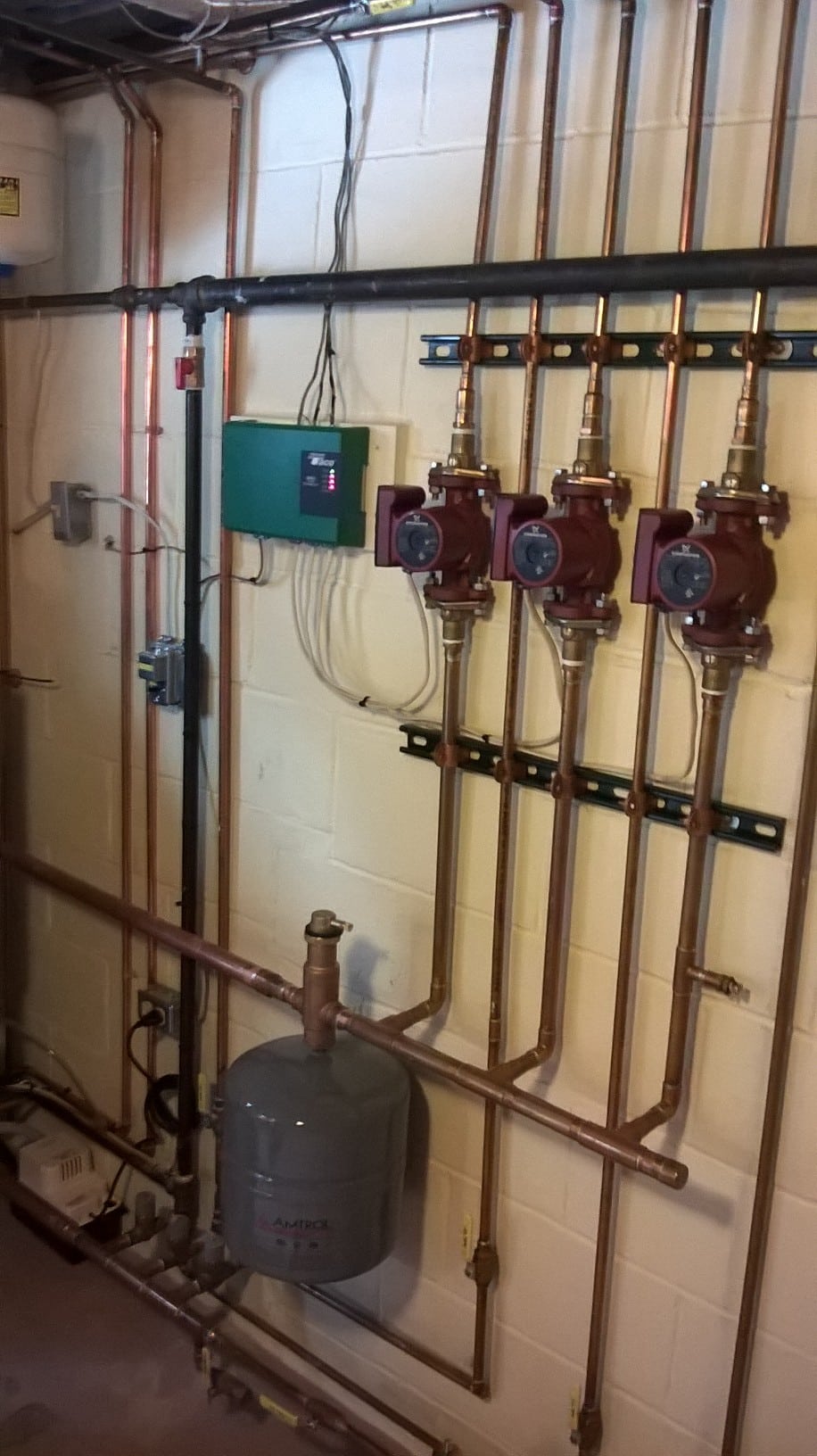Boiler heating systems are powered by natural gas. The boiler ignites the gas, which in turn, heats a copper pipe full of water that bends back and forth in the heating area. These copper pipes are called heat exchangers. This stage of the process transfers the heat from the ignited gas to the copper, and finally to the water. The hot water is then pushed through the system by an electric pump. As the hot water travels through the property, it enters each radiator, which is designed to transfer the heat from the passing water into the air. Every time the water passes through a radiator, it exits a bit cooler as it travels onto the next radiator. Eventually, the water cycles its way back to the boiler to be reheated and start the process again. The pumps are powerful enough to push the water upstairs and around corners. A thermostat regulates when the boiler system is turned off and on to maintain a steady, comfortable temperature. Any waste gases created by the boiler are vented through a flue and dispersed into the air. Because the system uses water, electric, and gas elements, it is very important to quickly repair the system anytime it requires maintenance.


